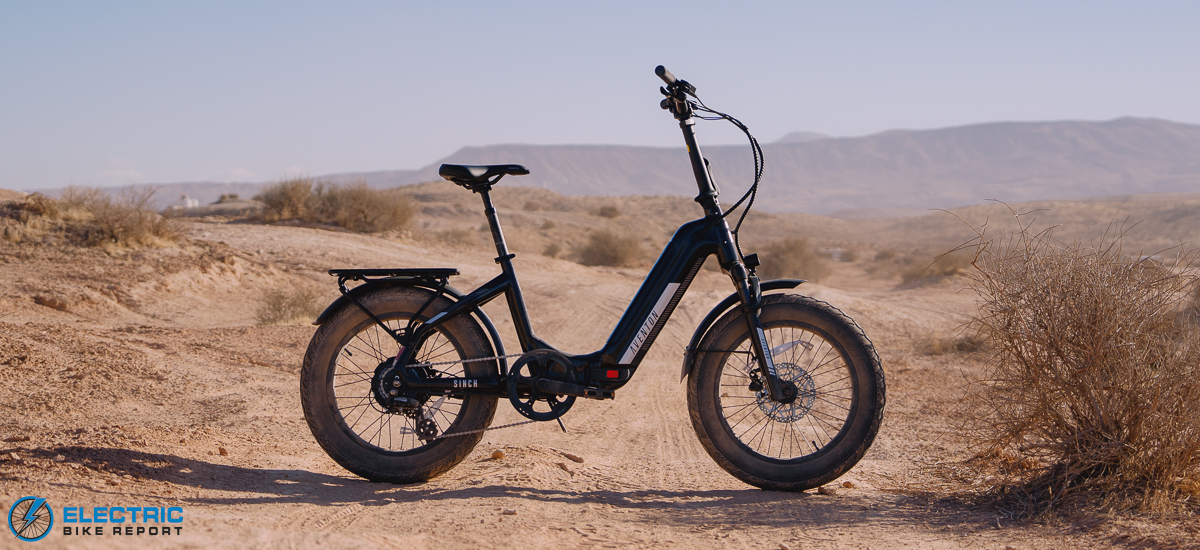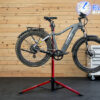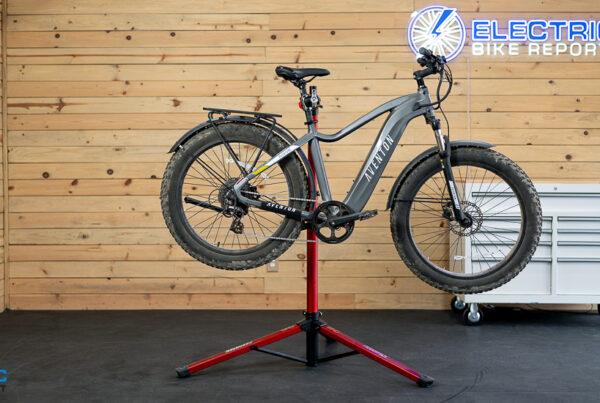Ride quality is a summary of all of the factors contributing to how a bike feels to ride. These factors include elements such as geometry, sizing, handling, motor engagement, user interface, etc. We found the Sinch 2.5’s overall ride quality to be great, though we also identified one area with room for improvement.
Some of the Sinch’s defining characteristics are its stability and sturdiness; its 20×4” fat tires provide a wide platform to cruise on, while its stout frame and above-average weight help it to feel solid and stuck to the road. With such small wheels, it is highly maneuverable, but its weight also helps to outweigh the twitchy handling that is common with folding e-bikes.
The Sinch 2.5 is sold in a single frame size advertised for riders between 4’11” and 6’2”. At 5’11”, I thought its sizing generally felt appropriate—its reach was neither cramped nor excessively stretched, and it includes a telescoping stem for handlebar height adjustment. With that in mind, taller riders will likely find the 6” of saddle height adjustment fairly limiting.
Among the Sinch 2.5’s upgrades is a suspension seatpost that, in combination with the coil suspension fork with 50mm travel, helps to smooth and cushion the ride. We appreciated the added comfort of the 250mm seatpost, but we recommend that Aventon spec the bike with a longer 350mm seatpost to provide better leg extension for those around 6’ tall.
Tires are another upgrade on this refreshed version of the bike. I found the Sinch.2’s smoother tan-wall tires to be relatively slippery on unpaved surfaces. In contrast, the 2.5’s street tires have a slightly more aggressive tread that, in my experience, performed better when riding over short gravel and dirt areas.
Continuing with new features, I liked the small handlebar-mounted display. Color-coded assist settings made it easy to know which mode the bike was currently in. The turn signal buttons were within quick reach of the grip, and the screen displayed all essential ride data, though I found the battery charge percentage rather small and tough to read while moving.
In previous sections, I mentioned that the bike’s speeds can be adjusted through the Aventon app. The app also allows users to track ride data (manually or automatically); it uses this data to suggest maintenance needs but can also sync with Strava and Apple Health. Users can also interact with a community of other Aventon e-bike owners.
When folding the bike, the Sinch lived up to the ease suggested by its name. It features a hinge mechanism built into its frame, as well as a collapsible stem and folding pedals—all of which are of relatively common design. We found the central hinge somewhat stiff but plenty secure and sturdy. When folded, the bike measured 37” L x 22” W x 31” H.
Overall, the Sinch 2.5 delivered comfort, responsive steering & motor engagement, an effective user interface, and a useful app. Those planning to fold/transport/store the bike regularly may find its weight cumbersome, but as I mentioned early on, the Sinch seems to prioritize being a good bike first, with its folding aspect being more of a secondary feature.
.
.
.
#Aventon #Sinch #Review #Functional #Folding #Upgrades
Source link








